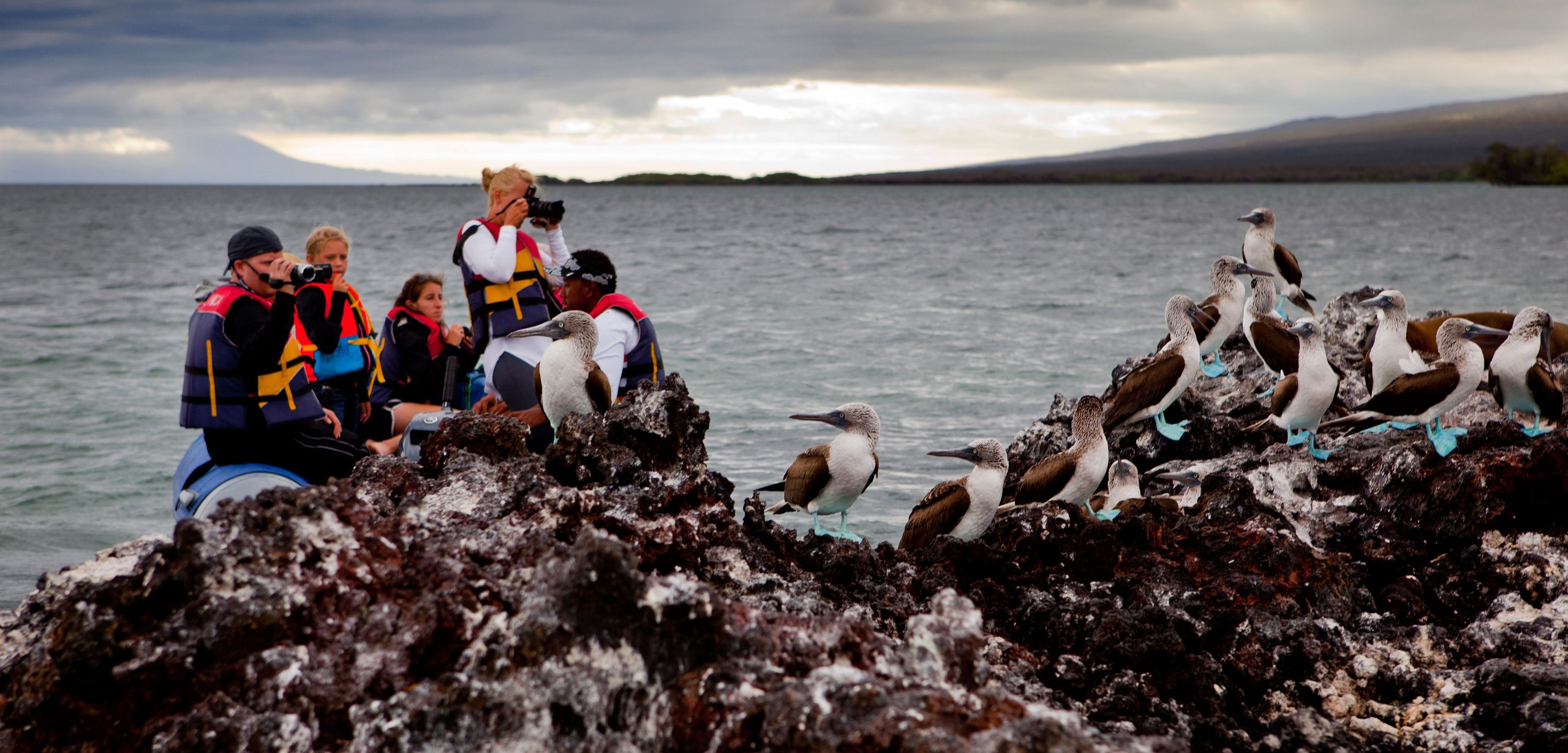Pulling at the Heartstrings Loosens the Purse Strings
New research shows ecotourists are more likely to contribute to conservation efforts if they feel connected to the cause and talk about it.
Article body copy
When Randy and Sally Knight visited the Tomás de Berlanga School on Santa Cruz Island in the Galápagos in January, the California couple noticed a few things were missing. In this most famous of scientific locales—the archipelago that inspired Charles Darwin’s theory of natural selection—where were the labs and the equipment needed for experiments? There weren’t any.
During a student-led tour of the joint elementary and high school, Randy, a retired scientist and college professor, asked the principal what it would take to get some hands-on activities for the kids. The first thing they needed was money. So the Knights made a donation to Galapagos Conservancy, directing the funds to support the school.
“Science education is really important to me,” Knight says. “The long-term protection of the islands depends to a large extent on educating the population that lives there.”
When ecotourists feel a connection to the places they visit, learn new things about the environment, and discuss their experiences with companions, they are more likely to financially support conservation efforts. That’s according to a new study from the Stanford Woods Institute for the Environment.
In a survey of 115 visitors to the Galápagos Islands, participants were asked to list three Galápagos National Park conservation measures they felt were in the most need of support, and if they would contribute to a fund that addressed their perceived priorities; 73 percent of respondents said they would make a donation.
“When you allow visitors to dream on their own about what the issues may be and how they want to make a donation, they are more interested,” says Nicole M. Ardoin, lead author of the study. “If you actually show people what some of the conservation projects are and you allow them to get eye to eye with those conservationists in the field, then people are much more inclined to be supportive and make donations.”
Ardoin adds that one of her team’s most interesting findings was that willingness to donate was significantly greater among travelers who talked about the trip. “The social aspect of making meaning of experiences is really critical,” she says. “The more processing and the more discussing people do, the more intimate they feel about the experience … and the more empowered they feel to contribute in a positive way.”
It’s insight that could prove valuable to tour companies and nonprofits.
Tourism generates more than US $1.5-trillion a year, and ecotourism is one of the fastest growing sectors of the industry. While ecotourism has been criticized for attracting people to places in need of protection, it also has the potential to inspire philanthropy if tourism operators and nonprofit organizations can translate travelers’ enthusiasm into donations.
“Tour companies need to promote and suggest to people who are going to these areas—especially people with a little bit of disposable income—that they contribute something to the protection of the environment, the habitat, and the local people,” says Brian White, director of the School of Tourism and Hospitality Management at Royal Roads University. “That’s absolutely critical, and that’s where ecotourism is trending at the present time.”
Indeed, a growing number of tour companies are partnering with conservation groups and the results look promising. Lindblad Expeditions is a leader in the travel philanthropy sector, and has raised more than US $9-million for conservation initiatives in the past decade.
After being introduced to the Galapagos Conservancy on their first trip to the archipelago in 2004, the Knights became members of the organization. When they learned it was offering its own expeditions, they booked their tickets, eager to continue supporting local conservation efforts.
“People who do international ecotourism pay a lot of money to go on these trips,” Knight says. “To give a little bit extra to make sure that the place you thought was worth visiting will be there in the future for other people to visit—think of it as a small surcharge on your trip.”

